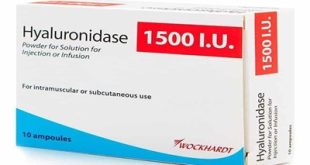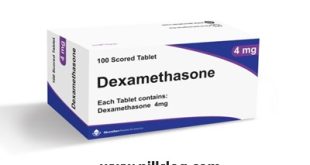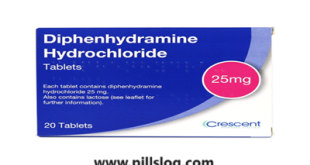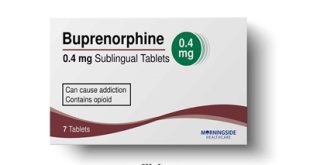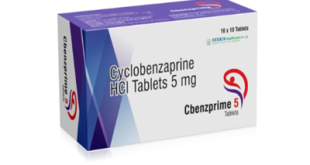Background Hyaluronidase is an enzyme used to improve the absorption and dispersion of parenterally administered fluids, drugs, and contrast agents. The action of hyaluronidase was first described in 1936, and named in 1939. Early research into hyaluronidase identified it as a “spreading factor” which allowed for increased permeability of the connective tissue. It has been used in surgical settings for …
Read More »admin
Isoprenaline – Uses, Precautions, and Interactions
Background Isoprenaline (also known as Isoproterenol) is a non-selective beta-adrenergic receptor agonist indicated to treat heart block, Adams-Stokes attacks, bronchospasm in anesthesia, cadiac arrest, hypovolemic shocks, septic shock, hypoperfusion, congestive heart failure, and cardiogenic shock. Isoprenaline research in the 1940s found that this isopropyl analog of epinephrine dilated the bronchi, as well as raising the heart rate and cardiac output, …
Read More »Luliconazole – Side effects, Interactions, and Overdose
What is Luliconazole? Luliconazole is a novel antifungal agent that belongs to the family imidazole. Luliconazole is used to treat broad-spectrum fungal infections. Luliconazole is beneficial for the treatment of skin infections caused by dermatophytes. Due to the unique molecular structure of Luliconazole, it can penetrate the nail bed and attain fungicidal concentrations there. So, Luliconazole can also treat onychomycosis …
Read More »Ganciclovir – Uses, Mechanism of Action and Dosage
Description Ganciclovir is an oxopurine that is guanine substituted by a [(1,3-dihydroxypropan-2-yl)oxy]methyl group at position 9. Ganciclovir is an antiviral drug used to treat or prevent AIDS-related cytomegalovirus infections. It has a role as an antiviral drug and an antiinfective agent. It is an oxopurine and a member of 2-aminopurines. It is functionally related to a guanine. Ganciclovir is an …
Read More »Fentanyl – Background, Overdose, and Uses
Background Fentanyl, a potent opioid agonist, was developed in the 1950s to fill a need for strong and rapid analgesia.8 Because of these characteristics, fentanyl is commonly used to treat chronic cancer pain or in anesthesia. Fentanyl is related to other opioids like morphine and oxycodone. Fentanyl’s high potency has also made it a common adulterant in illicit drugs, especially …
Read More »Dexamethasone – Dosage, Overdose, and Interactions
Background Dexamethasone, or MK-125, is a corticosteroid fluorinated at position 9 used to treat endocrine, rheumatic, collagen, dermatologic, allergic, ophthalmic, gastrointestinal, respiratory, hematologic, neoplastic, edematous, and other conditions. Developed in 1957, it is structurally similar to other corticosteroids like hydrocortisone and prednisolone. Dexamethasone was granted FDA approval on 30 October 1958. In a press release for the Randomized Evaluation of …
Read More »Diphenhydramine – Side effects, Dosage, and Precautions
Background Diphenhydramine – perhaps known most commonly as its brand name formulation Benadryl – is a first-generation H1 receptor antihistamine that is used extensively for the treatment of seasonal allergies, insect bites and stings, and rashes. However, it also has antiemetic, antitussive, hypnotic, and anti-parkinson properties. As histamine receptors exist both peripherally and in the central nervous system, diphenhydramine has …
Read More »Buprenorphine – Uses, Interactions, and Overdose
What is Buprenorphine? Buprenorphine is the first medication to treat opioid use disorder (OUD) that can be prescribed or dispensed in physician offices, significantly increasing access to treatment. As with all medications used in treatment, buprenorphine should be prescribed as part of a comprehensive treatment plan that includes counseling and other services to provide patients with a whole-person approach. Buprenorphine …
Read More »Clonazepam – Uses, Risk Factors, and Side Effects
Background Clonazepam is a long-acting benzodiazepine used to treat various seizures, including myotonic or atonic seizures, photosensitive epilepsy, and absence seizures, although tolerance may develop. The agent has also been indicated for treating panic disorder. The mechanism of action appears to involve the enhancement of gamma-aminobutyric acid receptor responses. Since being first patented in 1960 and then released for sale …
Read More »Cyclobenzaprine – Mechanism of action, Uses, and Interactions
Background Cyclobenzaprine, a centrally-acting muscle relaxant, was first synthesized in 1961 and has been available for human use since 1977. It was initially studied for use as antidepressant given its structural similarity to tricyclic antidepressants – it differs from Amitriptyline by only a single double bond. Since its approval, it has remained relatively popular as an adjunctive, short-term treatment for …
Read More » PillsLog.com | Instantly Drugs information Instantly find your pills from our A to Z list Medicines and Prescription Drug information for consumers and medical health professionals.
PillsLog.com | Instantly Drugs information Instantly find your pills from our A to Z list Medicines and Prescription Drug information for consumers and medical health professionals.
